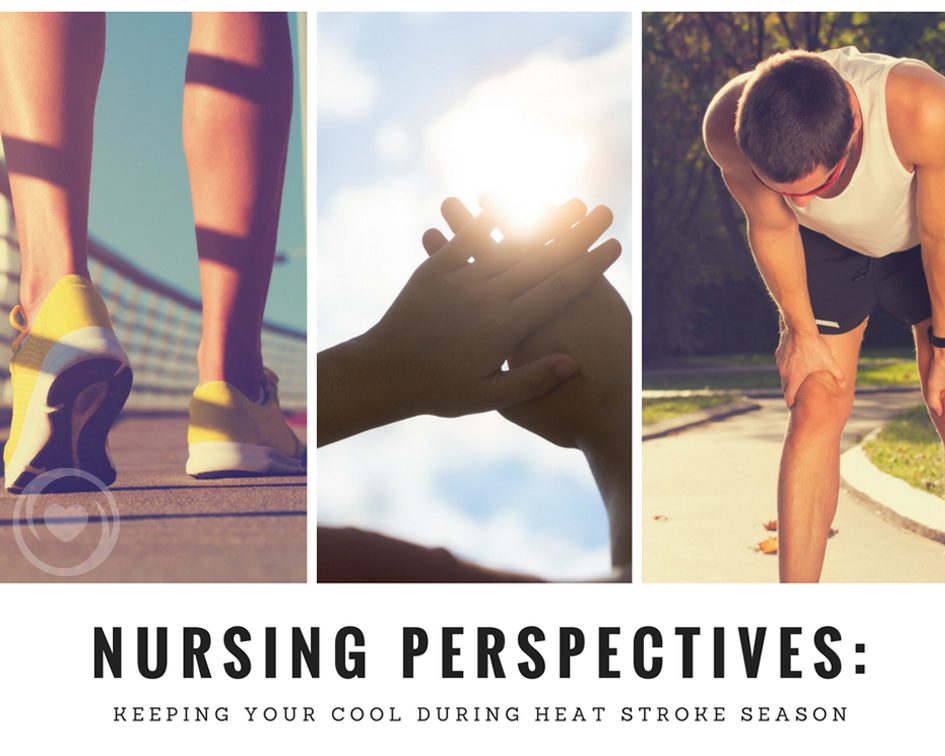When temperatures jump during the sweltering summer heat, so do reported cases of heat strokes and other heat related illnesses. Clinics and emergency rooms begin to see an upward trend in symptoms around May with cases peaking in July-August. With over 113 million Americans currently under a heat warning or advisory, it’s important that health care providers and nurses be vigilant in looking for heat stroke warning signs and symptoms in their patients.
Heat Related Illnesses Overview
The CDC classifies heat related illnesses into 5 major categories ranging in severity.
- Heat Stroke
- Heat Exhaustion
- Heat Cramps
- Sunburn
- Heat Rash
Heat Stroke
Heat strokes affect the central nervous system and can be life threatening. They are caused by a number of factors outside the body such as prolonged sun exposure. They are clinically separated from a fever in that heat strokes are not the body’s response to infection. A heat stroke generally occurs after symptoms of heat exhaustion are not treated.
Symptoms
- Sustained fever of over 102.2° F
- Nausea and vomiting
- Headache
- Dizziness
- Fatigue
- Rapid heart rate
- Hot and dry skin
- Shortness of breath
- Decreased urination
Heat Exhaustion
Heat exhaustion is the precursor to a heat stroke. People are prone to heat exhaustion when they are exposed to high temperatures and strenuous activity, usually without proper hydration. Heat exhaustion is preventable with proper precautions.
Symptoms
- Cool, moist skin with goose bumps when in the heat
- Heavy sweating
- Faintness
- Dizziness
- Fatigue
- Weak, rapid pulse
- Low blood pressure upon standing
- Muscle cramps
- Nausea
- Headache
Heat Cramps
Heat cramps are painful, brief muscle cramps that happen when overworked muscles spasm or jerk involuntarily. Onset can be immediate or happen within a few hours of exercise or working in hot and humid environments.
Symptoms
- Seizing pain in muscles, particularly the calf area
- Hard lump of muscle tissue visible beneath the skin
Sunburn
A sunburn is the body’s reaction to ultraviolet (UV) rays from the sun. Skin can burn within as little as 15 minutes of UV sunray’s exposure and it’s important to note that it needn’t be bright or sunny for a sunburn to occur. A sunburn is a temporary inflammation of the skin that lasts for several days. However, prolonged exposure to these damaging rays can have long-lasting effects such as dry, wrinkled skin and also predispose the body to higher chances of skin cancer.
Symptoms
- Pinkness or redness
- Skin that feels warm or hot to the touch
- Pain, tenderness and itching
- Swelling
- Small fluid-filled blisters, which may break
- Headache, fever, nausea and fatigue if the sunburn is severe
Heat Rash
Heat rashes occur when the body’s perspiration is trapped beneath the surface of the skin by blocked pores (sweat ducts.) Symptoms range from superficial blisters to deep, red lumps. Some forms of heat rash feel prickly or intensely itchy.
Heat rash usually clears on its own. Severe forms of the condition may need medical care, but the best way to relieve symptoms is to cool your skin and prevent sweating.
Symptoms
- A rash (with or without visible blisters) that occurs when the skin is kept too hot and moist for a prolonged amount of time
- Can be bothersome if itchy
- Can develop deep within the skin in more severe cases
In any event, it’s important that clinic staff be aware that the hot weather brings about a variety of associated illnesses. And, as with any medical issue, an ounce of prevention goes very far!


0 Comments